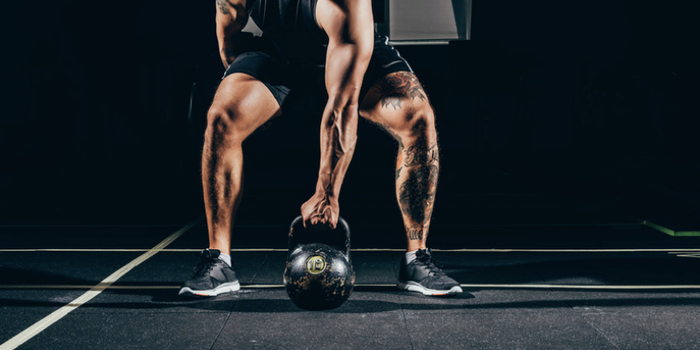Getting the most out of your time in the gym doesn’t mean you have to spend your life there
It’s a matter of quality over quantity. What really delivers sought-after gains is consistency and adherence to principles that have stood the test of time.
We lead extremely busy lives nowadays, so it’s about maximising your available time. It’s difficult to find someone who better represents this than Ashley Grossmann, personal trainer and movement specialist at Gymbox.
Grossmann is an Oxford-educated former management consultant who traded banking and suits for a career in the gym. Here are Grossmann’s tips for getting the most bang-for-your-buck from your training:
Follow a programme
“Random training produces random results.
“Imagine running a business where you sold different things at different prices every day and you didn’t track whether sales for each product were going up or down?”
This strategy is not geared to produce your greatest possible gains, Grossmann states.
“You need structure to focus on the things that matter. Primarily, this stands for the movements, sets and reps that ensure you’re covering all the bases.
“For at least 4-6 weeks you need to ensure you’re sending a consistent message to your body, telling it the way you want it to adapt.
The sets and reps may differ according to your goals, but adherence to your plan should always feature.
“At the very least download a free programme online to cover all bases. For best results, get a coach or trainer to tailor a specific plan for you and your goals.”
Consistent progressive overload
“Progressive overload means doing a little bit more each time you train – and you’d be amazed how many people don’t do this.
“This could be achieved by increasing the weight, sets, reps, times, rest intervals or speed depending on your goals. The principle is simple; unless you ask your body to do more than it is comfortable doing, it won’t change.”
You may struggle to remember your performance on every single exercise, so this is where keeping a notepad comes in handy. Nowadays, there are also apps such as Gravitas which allow you to track what you’re lifting on your phone.
“Track as much as you can, so you can be consistent and ensure you’re lifting a bit more than last time, at a minimum weight sets and reps.
“It serves as great motivation to see yourself improve and hit clear targets each week. Opt for small gains week-by-week for big results, rather than rushing too much too soon and plateauing.”
In the same way that one bad workout won’t negate your progress, one great session won’t suddenly spark growth.
“One extra rep every week for a year trumps a monster week out of the blue that you can’t match for the next three months.”
Move well
While proper programming is pivotal, the technique with which you lift is also hugely important.
“Ensure you use safe technique on your chosen exercises. Check videos online and compare to videos of yourself.
“Hire a trainer. Just don’t mess it up. Ultimately, poor form will cost you results long term as it adds up and could result in injury.
Optimal lifting technique doesn’t just mean you stay injury-free, either.
“Good form means you stress the muscles you want to, so you have more say in how your body changes. Do the exercises properly to sculpt guns like Arnold”, Grossmann states.
Be patient
Remaining patient is key to realising your potential, Grossmann believes.
“Stay confident that if you improve every session, you’re better every week. Watch those gains roll in on autopilot.
“We live in times of instant gratification, where we often try to rush results – but significant changes take time.”
Getting in shape demands that you take things steadily.
Once you achieve the results you desire, Grossmann says that “it’s easier to maintain and make further improvements using the principles of movement, consistency and structure”.
Read more: Why training your legs can even grow your chest and back























































